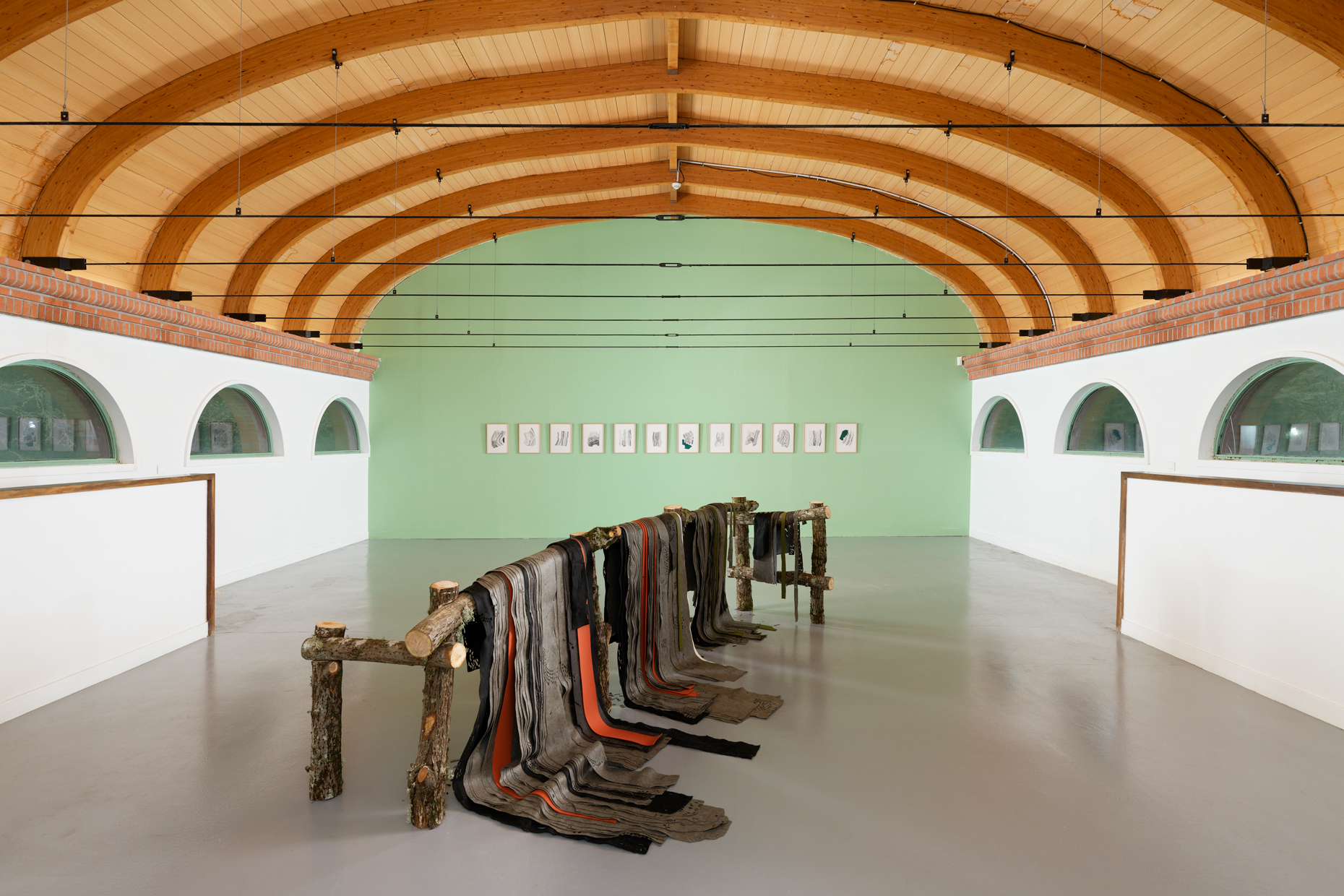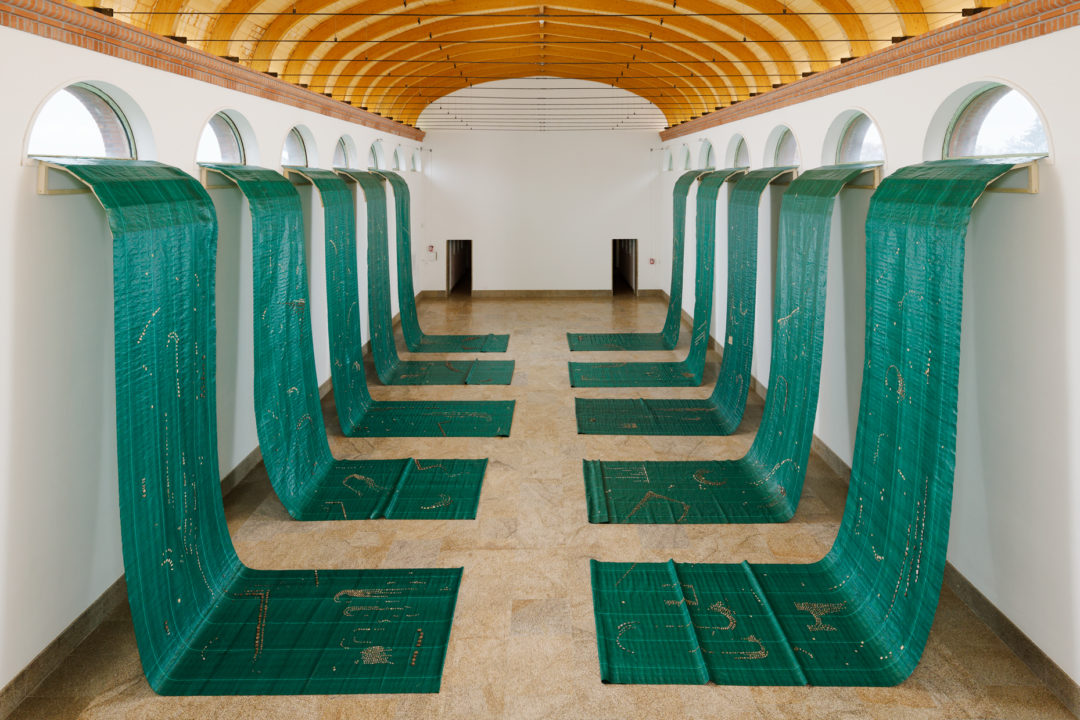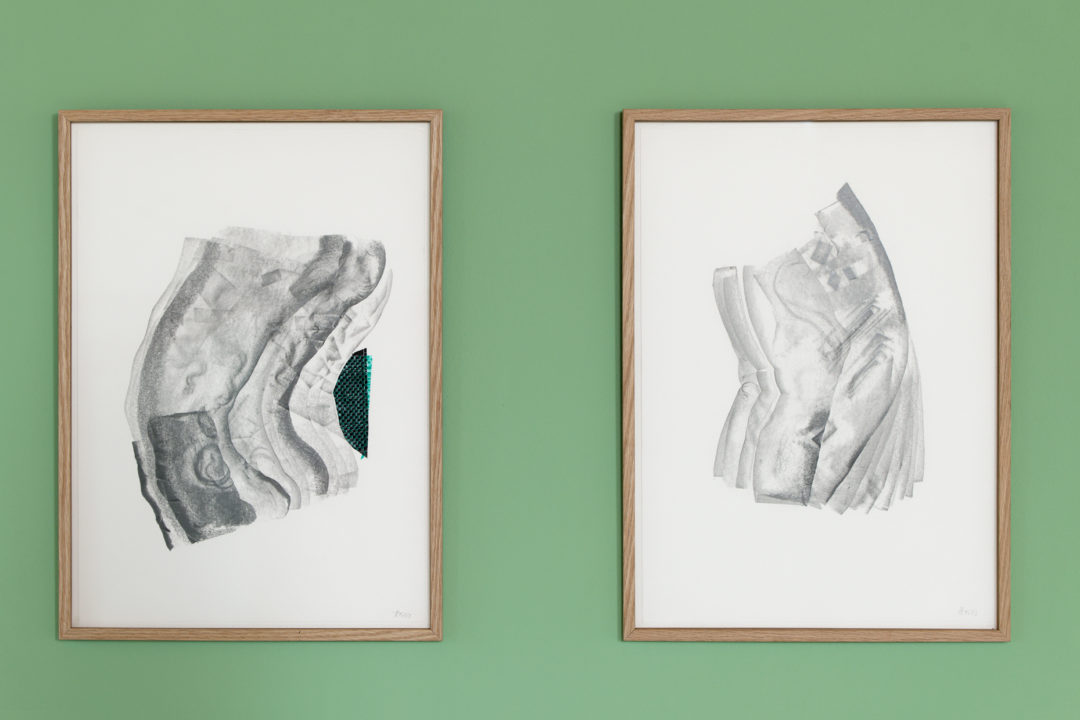Hera Büyüktaşcıyan

Resonant Grounds
curated by Alexandra McIntosh
Centre International d’Art et du Paysage—Île de Vassivière
26/11/2023 – 10/03/2024
Geographical specificity and historical complexity are key in the new series of work by Hera Büyüktaşcıyan that deals with the Plateau des Millevaches region in her solo exhibition Resonant Grounds at Centre International d’Art et du Paysage—Île de Vassivière. The artist, who is known for including and bringing to the surface suppressed narratives in her work, remains sensitive to the information she gathered during the time of her residency at Ile de Vassivière from her interactions with locals as well as the non-human. Born in Istanbul to a family of Greek and Armenian descent, she early on perceived the power of the fragment as historical evidence in service of collective memory. Through walking,a major part of her artistic practice, her observations of details reveal traces of erasure cutting across different temporal layers.

In the manner of an archaeologist, Büyüktaşcıyan slowly excavates elements of her research observing the human and non-human in the landscape around her, using parts of it for her works. Although she had not incorporated living and natural materials into her work before this exhibition, in her studio in Istanbul one finds an interesting collection of stones: no accident, this material absorbs and condenses many geological times and memories. Stones are simultaneously whole and fragmentary, they are complete and ruins, incorporating the past while also hinting at future creative possibilities. An element, similar to the format of a stone, sometimes more “squared” and sometimes in more anarchic forms, returns to many of Büyüktaşcıyan’s works, whether in the form of sculptural elements, engravings on surfaces, or even in her video as a stop motion element. A fragment and a whole that finds the strength through the work of the artist to stand and speak its own language, functioning as a letter and a word simultaneously.
We find this motif again in the exhibition Terres Résonnantes, this time in the shape of fragments of wood the artist finds while walking around the landscape surrounding CIAP Vassivière. These fragments rest on a series of large pieces of mulch fabric, in the installation Defending Ancient Waters, which seem to rush out of the windows, a reference to the Plateau de Millevaches region, which derives its name from the many water springs, rivers and streams of the area. These river-like forms, hewn from a material used in cultivation to tame nature, do not aim to represent a landscape. Nor do they attempt to create some trompe l’oeil effect; they stand as a reminder of a past relationship with the landscape. Water is a key and recurring element in Büyüktaşcıyan’s oeuvre; in this specific work, she addresses pagan meanings that remain alive to this day through local practices. From the spiritual use of local springs in pagan rituals to their use for the construction of hydro-electric dams in the area – something which caused the forced displacement of the populations of some villages now located at the bottom of current lakes – the artist comments on human desire and its projection in nature. Small fragments of wood from tree trunks are embroidered onto the fabric creating geometric skeletons, a top view of a city as a reminder of the imposed change.
The pagan use of water, which the artist explored by herself by visiting springs in the area – the bonnes fontaines, considered to have healing powers – is dealt with more directly on the first floor of the CIAP Vassivière with the installation A Rehearsal for Changing Skin. Through the use of tree trunks, on which it is customary to tie one of the two identical clothes that one wets in the spring water, the artist transforms a hidden space into an involuntary monument. The continuous transition from natural to artificial material, a portrait of the landscape of the area itself, is also embodied in the connection of wood with felt and geotextile: both materials are related to water, as evidenced by the alchemical, water-intensive method for producing felt.The multiple fabrics, as if tired skins, rest on this structure that once again symbolizes more than represents. Along with the element of water, the artist uses the element of fire to superficially burn the felt in square forms that form compositions, creating a visual continuity with the ground floor compositions of wooden bark fragments. The naturalness and weight of this sculptural installation is interwoven in the space with graphite frottage drawings, entitled Wolves and Sheep, a series of translucent abstract designs where elements from folk tales and the area’s past intermingle. The reference to the figure of the sheep recalls earlier uses of the land and the constant changes in its biodiversity, while the figure of the wolf, appearing as the personification of evil in fairy tales, comments allegorically on the imposing human gaze in nature.

In the same vein, Büyüktaşcıyan is drawn to the colored markings she finds on trees in the area – indicating those deemed infected or sickly by humans and destined to be cut down. In her work Dendrologia, the artist collects these pieces of bark, giving them the form of a mask and presenting them in a suspended semicircle, a community hanging from the high ceiling of the Lighthouse building of the CIAP Vassivière. Crafted collaboration with the local choir Ensemble Madrigal, a choral piece surrounds the installation with a resonating sound, disconnecting words from their original verses to create an abstract chant that seems to point towards multiple religions, languages, and conceptions of the divine and the world.
In a delicate way Büyüktaşcıyan’s exhibition talks in multiple forms about the limitations in our perception of the other, both in the case of human and non-human entities. While choreographing the natural with the artificial she attempts to bring different temporalities onto the same plane, sounding out the area as she gives equal importance to ways of seeing and projecting that have led this land and people to its current condition.
______________________________________________________________________________
Head image : A Rehearsal for Changing Skin, CIAP Vassivière, 2023. Photo © Aurélien Mole – Courtesy of the artist
Related articles
Streaming from our eyes
by Gabriela Anco
Don’t Take It Too Seriously
by Patrice Joly
Déborah Bron & Camille Sevez
by Gabriela Anco

